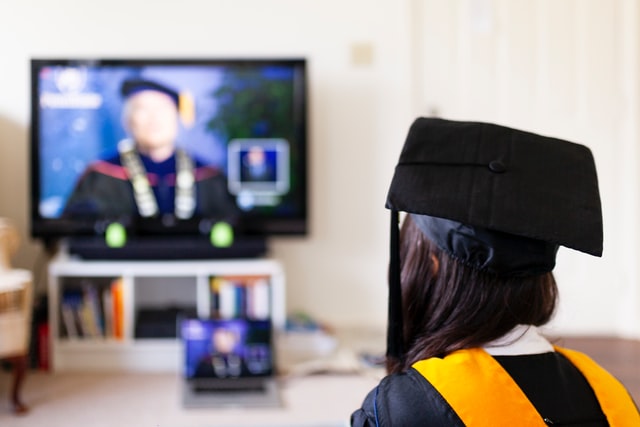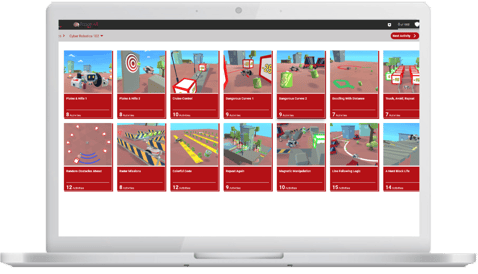 Photo by Mohammad Shahhosseini on Unsplash
Photo by Mohammad Shahhosseini on Unsplash
Remote teaching has brought profound changes. I went through a grieving process for what my classroom once had been and for what it felt like to be in a room with students and interact with them so easily. But as I made my way through that grief, after a month or two I began to find some hope. I realized that there are lots of lessons to be learned from this time of distance learning. When we can be in person again, there are some practices that will carry with me because I discovered they actually work better:
GUEST SPEAKERS, PANELISTS, SUPPORTERS
As a teacher who uses principles related to design thinking and leads students in project-based learning, I believe it’s essential to begin with the end user in mind and provide projects that connect to the real world. I am always inviting in panelists and experts to provide feedback for students.
I close my English 9 spring semester with the dream job unit. Students pick a dream future career or job and build a portfolio that contains a cover letter, a résumé of soft skills learned from my class and others, project examples, and visuals. During remote learning, I shifted this to a Google Slides portfolio that I created with a template for each student.
After students completed their slides, I worked to find volunteers who matched their specific fields of interest, and students prepared for a group interview. I had double the volunteer interviewers that I have had for the last 10 years, but I was able to have people from all over the world participate and help. One student wanted to be a special-effects makeup artist. I posted a message on my Facebook page and was connected with a Hollywood director who put me in contact with a professional makeup artist who worked on the Saw movie franchise. In person or not, we will be creating digital slide portfolios, and I will have panelists connect online with the students they’re interviewing.
SMALL GROUP WORK WITH GOOGLE DOCS, SLIDES, AND JAMBOARDS
During my in-person classes, I often have students work in groups. Students have shared contracts to help keep them accountable as they work together on a common goal. Through distance learning, I discovered that I didn’t have a way for students to use their collaborative time effectively. How would I know what they actually worked on and discussed? I had them record their discussions, but that meant I needed to listen to them later. I also had them produce or create something, but then it was hard to know who was doing the work.
Being remote, I used Google Meet for breakout sessions to allow students to be in mini-groups for discussion and work. When working this way, the noise of one group did not affect any other teams, and I could pop into different rooms and monitor students’ activity. In addition, every time they were in a group, they worked on a shared Google slide, doc, or jamboard that I owned as the teacher. This way, even if I wasn’t in their discussion, I could visually see their progress. I could even leave comments as they were working to provide feedback without listening to the conversation.
CLASS DISCUSSIONS
The beauty of the Google Meet or Zoom space was that it allowed students to speak and write in real time. I found myself being able to see students who may have felt or been unseen in my classroom because of where they sat or because someone else often spoke on behalf of that table. I had the ability to see all faces at once on the screen and could better control the conversation through muting microphones, something I wouldn’t be able to do in person. I also developed a protocol for these online discussions that was shared worldwide through district professional development presentations, in Twitter chats, and at global Google Educator Group events.
What really changed things for my class was giving students the following jobs that aided in the discussion.
Welcomer: If a student arrived late, this student would type a welcoming message in the chat and give a one- or two-sentence overview of what had happened so far. Once we’re back in the classroom, I plan to have one student greet guests at the door and another one or two check in with anyone who is late to get them caught up.
Linker: If I shared a link during remote instruction, this student would save it because someone would inevitably ask for it. In person, the linker would still make note of where important links are posted on our learning management system or daily agenda to help students who don’t know where to look.
Questioner: If a question popped up in the chat while I was sharing my screen so I couldn’t see it, the questioner was allowed to unmute him- or herself and let me know. This prevented several students from unmuting themselves and talking at once. During face-to-face instruction, this student would become a speaker for the table. A group can discuss their ideas first and try to problem-solve. Later, one person per group can share out questions.
Timekeeper: This student provided a time warning to help us all stay on track. I always need someone to keep up with the time even in my classroom.
Notetakers: While all students took the notes they needed for themselves, I would add these students’ notes to my daily agenda for anyone who was absent. I sent their notes along with the daily recording to make sure that all students could keep up with the work. This will be essential as we return to a new view of school. Not all students will be able to attend, and I must be prepared for this. It will also help students process what they’re learning.
It might not be the classroom I had before, but there are some practices that I will take with me into my classroom next year whether we’re remote or in person. This time has pushed me to look at my practices in a new way and forced me to make improvements in areas I had told myself were just fine. While I never wanted Covid-19, I am forever grateful for the changes that being forced to work remotely has inspired me to make, both for me and for my students.
Original article here: https://www.edutopia.org/article/3-lessons-online-learning-take-back-classroom
Discover more online resources with RobotLAB and CoderZ!

CoderZ is an online educational environment that improves students 21st century skills, while they are having fun programming their own virtual cyber robot. CoderZ and RobotLAB has different lessons to do at home! Check them out Here
